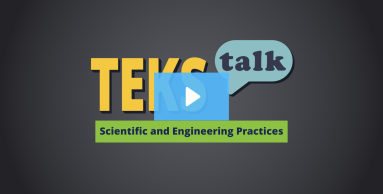Scientific and engineering practices. The student analyzes and interprets data to derive meaning, identify features and patterns, and discover relationships or correlations to develop evidence-based arguments or evaluate designs.

Knowledge and Skills Statement
The further explanation is designed to be a resource for educators that helps them better understand the topic their students are learning. Further explanations may be written at a more complex level than would be expected for students at the grade level.
Students can evaluate their design solution (prototype, product, process, or proof of concept) using a rubric. A rubric is a tool that can be used to guide and assess student performance and skills related to the design challenge and associated thinking processes (engineering design process or computational thinking).
The rubric can be designed by students or the teacher and should consider the following areas:
Were the criteria and constraints for the design challenge met?
- Students design their solution based on the criteria (desired outcomes) and consider constraints (limitations).
Did the design include ideas from all team members? - Students work in collaborative teams to contribute solution ideas and design a cohesive plan.
Did the design solve the problem? - Students develop and implement testing processes, gather data, and engage in data analysis. Data results are analyzed to determine how the design solves the problem.
Was the project at or under budget? - Students conduct a cost-benefit analysis. A cost-benefit analysis compares the projected or estimated costs with the benefits (or opportunities) associated with project decisions. In an engineering design challenge, examples may include but are not limited to material costs, building/implementation time investment or duration, environmental impact, safety considerations, and projected durability or longevity of the design solution or product.
Research
U.S. Department of Education. 2018. "Education Design" in Technology and Engineering Literacy Framework for the 2018 National Assessment of Educational Progress. Washington: National Assessment Governing Board. https://www.nagb.gov/content/dam/nagb/en/documents/publications/frameworks/technology/2018-technology-framework.pdf
Summary: This article articulates the engineering design process for finding solutions to problems or completing challenges. Successful solutions have criteria and constraints that must be considered throughout the problem-solving process. Scientists often consider how similar problems have been solved previously to help generate ideas. These solutions/final products must be evaluated to see if the product or process meets the requirement and solves the problem.
